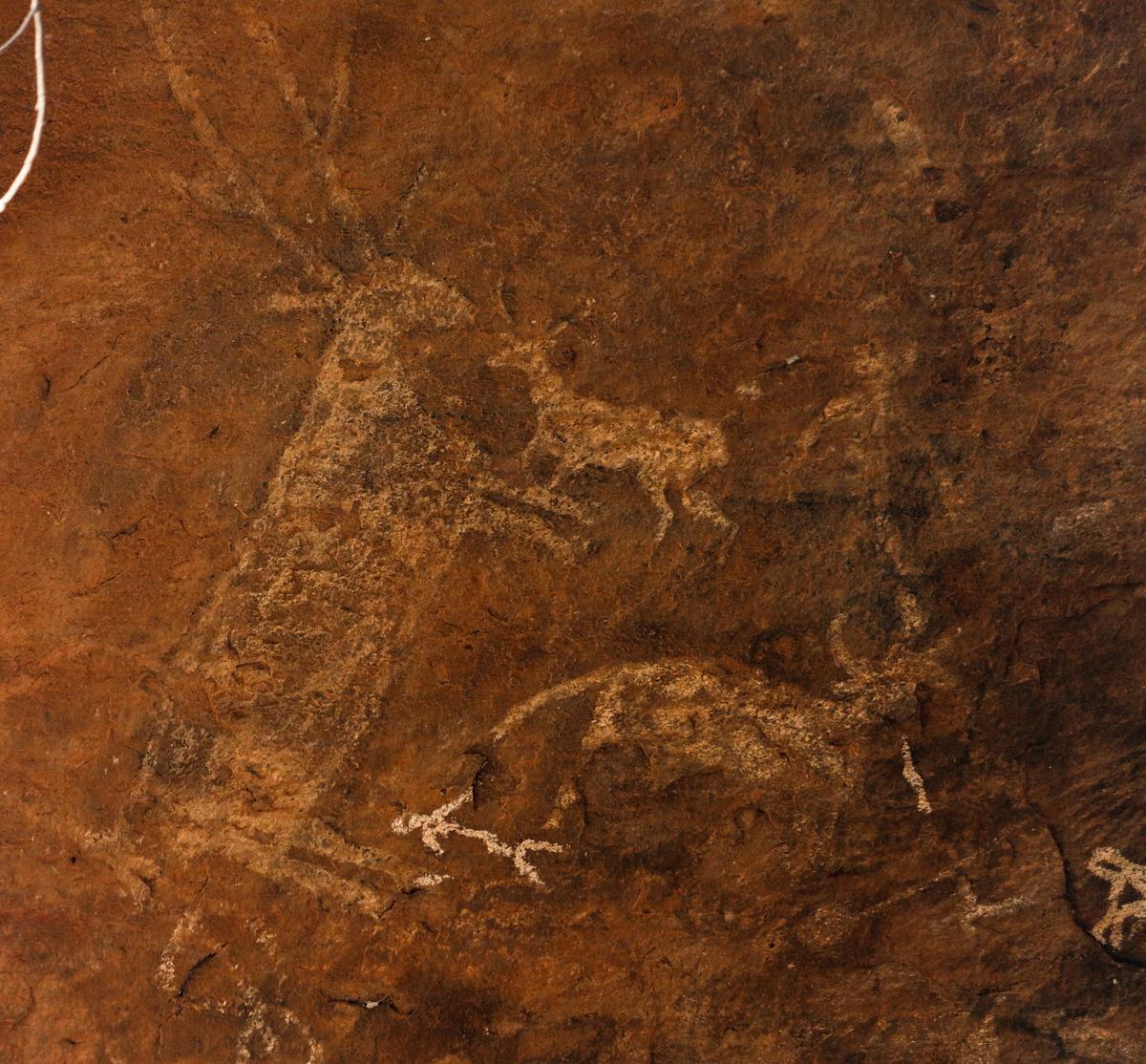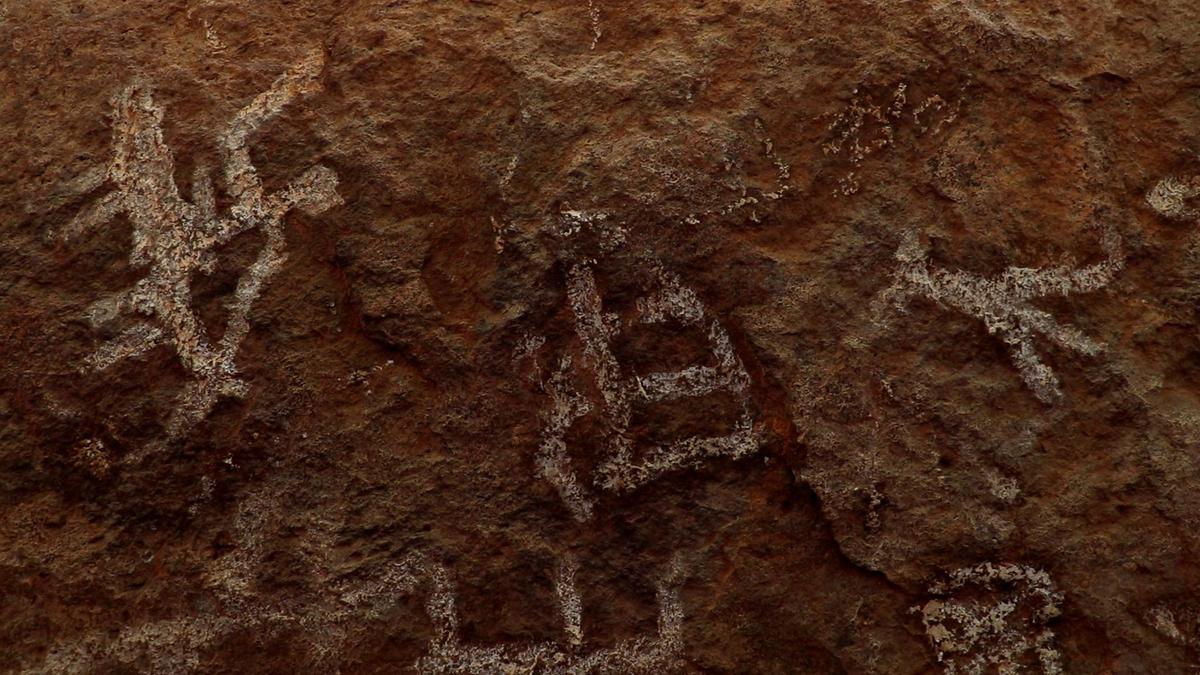Students revisit history on rocky hills surrounding Madurai and document rock art dating back 5,000 years
Students revisit history on rocky hills surrounding Madurai and document rock art dating back 5,000 years
Just before the pandemic struck, Ahil Rishi Rajasekaran was birdwatching at Usilampatti when some locals inside the forest area mentioned Chithirikal podavu (cave with paintings). Little did the 20-year-old student of The American College realise then that the unique motifs would make him embark on a journey of discovering rock art in and around his hometown, Madurai.
Between 2020 and now, Ahil Rishi, along with his friends Hariharan, Praveen and Paul Moses, explored a treasure trove of 16 rock art sites with such passion that the Thanjavur-based Nerunji Literary Movement has now published their documentation of the rock art forms. There are several publications in Tamil, but Rock Art of Madurai: The Pre-history of a Civilisation is the first one in English.
Ahil Rishi, who has just completed MSc (Microbiology) says there are at least 25 rock art sites around the temple town and it is his dream to detail every finding so that they can be protected from future quarrying and mining. “It is important to partner with local landowners to protect these cave sites, and the forests that surround them so that the cultural heritage and wildlife depicted in the drawings are preserved for future generations,” he says.
Cave paintings make a fascinating study
| Photo Credit: SOMA BASU
The college students were initially unaware of inscriptions on rocks. Then, they joined the trek to Samanar Malai Jain caves with Green Walk, a peoples’ initiative based on the concept of trekking and touring heritage sites around Madurai to raise awareness.
“After seeing the two-storey cave with multiple paintings at Usilampatti, this was the first time we saw in detail early paintings adorning cavernous walls and learnt about how rock art, the cultural and natural heritage, is a means of communication,” says Ahil Rishi. It also marked the beginning of a journey for the youngsters who have spent the last three years making multiple excursions to the hills of Madurai.
Rigorous climbs
“Most of the hills around Madurai are not vegetated, and at places like Yannai Malai and Tiruparankundram, it is a gigantic single piece of stone. Many places were laborious climbs but it did not kill our curiosity or excitement to explore,” says Ahil Rishi, who has authored the book.

Fascinating rock art: At Usilampatti
| Photo Credit: SOMA BASU
The boys made multiple visits to Kidaripatti, Azhagar Malai, Karungalakudi, Keelavalavu, Puthurmalai, Kongar Puliyankulam, Thiruvadhavur, Devankurichi, Thummanaickenpatti, Melakuyilkudi, Vikramangalam, Anaipatti, Peraiyur, Keezhapatti, Maanoothu, to photograph and video-record the graffiti, cupules, petroglyphs and pictograms. They sought help from historians and archaeologists to research and identify the key components of rock art forms and themes.
While it has resulted in a comprehensive basic level study of both intra-and inter-site rock art and revelation of exclusive traits, Ahil Rishi rues that people of Madurai are unaware of the existence of such wealth. “Not even a single sign board states the presence of these sites. They are not easy to find and reach; we also found several limestone boulders with deep, ancient carvings,” he says.
Fascinating rock art: Bird faced man in Azhagar Hills done in red ochre
| Photo Credit: SOMA BASU
What fascinated him further was despite the distance between the rock sites with differently-themed pictograms done in red ochre and white kaolin, some motifs have similarities in strokes and patterns indicating a connection between the cultural and communal zones of that period.
Estimating the age of rock arts is challenging but researchers believe that the rock art of Madurai is not less than 5,000 years old. The estimation is based on stylistic comparison and relative dating method that analyses and compares the types of motifs depicted on the rocks, their location in the landscape and other recognisable characteristics to sites where similar datable information is available, says Ahil Rishi.

Fascinating rock art: Pictograms of Kongar Puliyankulam
| Photo Credit: SOMA BASU
“Studies of the new finds will help to understand the purpose and meaning as several rock art motifs have also been found to be similar to Indus signs,” he says, adding that the relationship between what art portrays and what it symbolizes can be complex.
Stay connected with us on social media platform for instant update click here to join our Twitter, & Facebook
We are now on Telegram. Click here to join our channel (@TechiUpdate) and stay updated with the latest Technology headlines.
For all the latest Entertainment News Click Here
For the latest news and updates, follow us on Google News.
